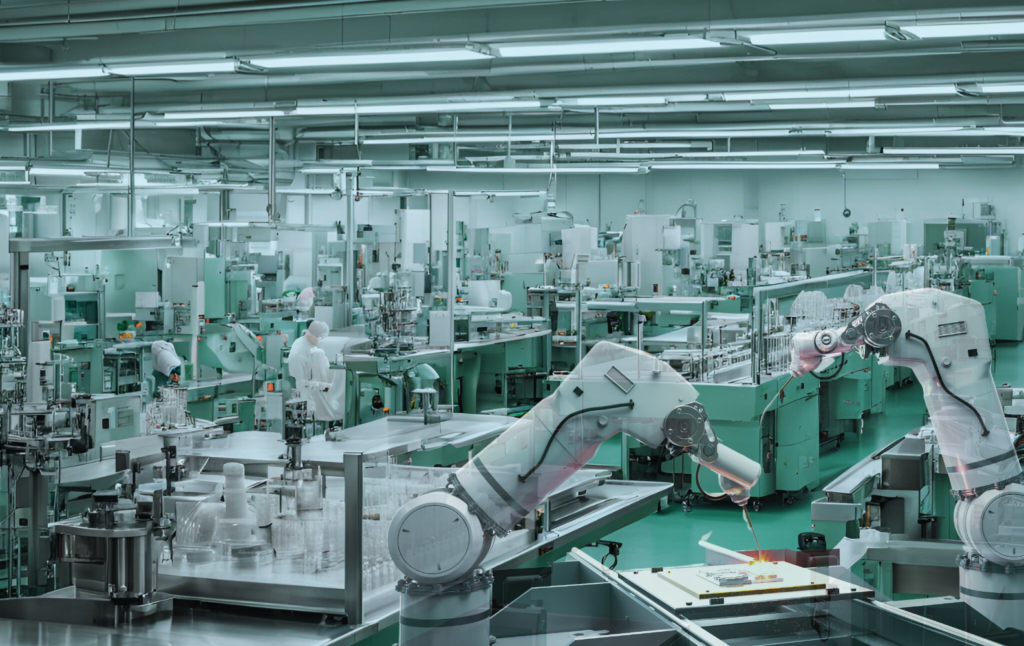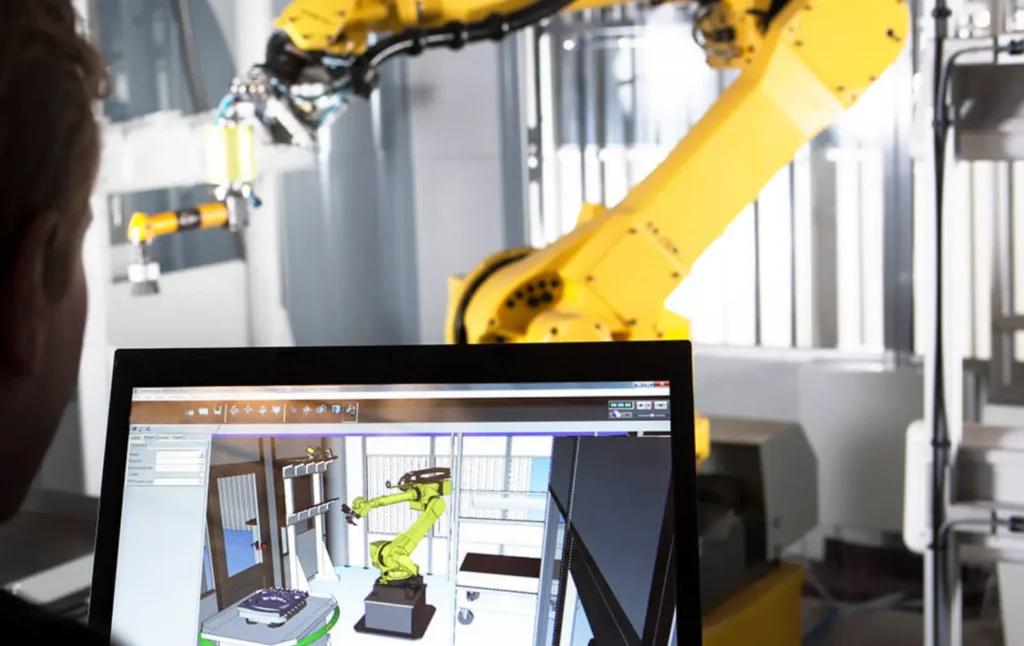Digital twin for predictive analysis in the medical equipment industry
In the evolving landscape of the medical equipment industry, the integration of advanced technologies has become critical. Achieving superior operational efficiency is essential, as enhanced patient care and significant cost savings also play crucial roles. One transformative technology is the digital twin. It offers unprecedented capabilities for predictive analysis.
Let’s explore the profound impact of digital twin technology on the medical equipment industry. Its mechanisms, benefits, and potential future advances, but most importantly, how simulation is helping to make the industry more responsive to market demands.

Understanding digital twin technology
Digital twin technology entails the creation of a virtual replica of a physical entity or system. This digital counterpart is continuously updated with real-time data while simultaneously enabling statistics, estimates, and predictions.
The origins of this technology date back to the aerospace industry. It was initially used for monitoring and maintenance of complex aircraft systems. Since then, however, its applicability has widened. Today it extends to a variety of industries, including health and medical.
Enhanced equipment production
In the medical equipment industry, digital twins play a pivotal role in the industrialization stages. Manufacturers can identify potential production and logistics issues and optimize designs before building the systems that will help bring the equipment to market. This not only speeds up the development process, but also reduces the costs associated with the multiple adjustments required by regulations.
By simulating changes to plant layouts before actually implementing them, costs can be estimated and optimized ahead of any real-world initiative.
Real-time monitoring and maintenance
Once the plant is commissioned, the digital twin enables real-time monitoring and predictive maintenance. With the help of sensor technology, the digital twin can be kept accurate by feeding in the plant’s detected data.
Advanced analytics and machine learning algorithms, enable the simulation to become an intelligent and selective data collection center.
This proactive approach can reduce the possibility of unplanned events and minimize idle time.
Reliable production and delivery of medical equipment can have a direct impact on healthcare facility management and patient quality of life.
Other predictive analysis and decision support
Optimizing operational efficiency
In addition to the efficiency of production plants, logistics, and intralogistics, the digital twin is also concerned with the usage phase of medical equipment. How?
In a hospital setting, flow simulation allows for the calculation of patient flow, making available certain data that includes their transit through healthcare environments. Consequently, by analyzing potential peaks in equipment usage, data on their obsolescence can be derived.
More generally, during critical times, healthcare facility administrators can modify the parameters of patients in transit and identify bottlenecks. They can predict usage peaks and make informed decisions to optimize operations. This leads to better resource management, reduced patient wait times, and ultimately, an improved quality of care.
FlexSim and Visual Components: empowering flexibility in the medical equipment industry
Simulation for adaptive manufacturing
FlexSim and Visual Components are at the forefront of process and flow simulation.
Among the goals of these powerful tools is the flexibility of manufacturing processes in medtech. The ability to adapt quickly to the changing demands of the market is critical. This is especially true in response to regulatory changes or emerging healthcare trends.
Take, for example, when, during the COVID-19 pandemic, there was a sudden surge in demand for some drugs as well as for some specific machines, such as portable pulse oximeters to monitor patients’ oxygen levels at home.
In such cases, manufacturers using FlexSim and Visual Components can quickly analyze existing plants and assets and perform simulation of resource purchases and implementations, in order to assess how to accelerate production and be able to successfully meet the increase in demand. In the pandemic example, when the emergency subsided, industries had to re-adjust production and distribution across the territory: simulation tools enable rapid course changes. The result is maintaining operational efficiency and responsiveness to market fluctuations.
Enhancing regulatory compliance
The medical equipment industry is highly regulated with stringent standards to ensure patient safety and product efficacy. FlexSim and Visual Components provide robust platforms for simulating compliance. Manufacturers can model their processes to meet regulatory standards. They quickly adapt to new guidelines as they emerge. This ensures that new medical devices are brought to market faster. It does so with fewer compliance issues reducing time-to-market and associated costs.
Future perspectives and advancements
Integration with artificial intelligence and machine learning
The future of digital twin technology in medical equipment industry is intrinsically linked with advancements in artificial intelligence (AI) and machine learning (ML) These fields are evolving rapidly. AI and ML algorithms are becoming sophisticated. The predictive capabilities of digital twins will be further enhanced. These technologies will enable more accurate predictions of equipment failures.
Expanding applications and accessibility
As digital twin technology continues to evolve, its applications will extend far beyond the production of medical equipment, including, for example, a wider range of devices and systems that can be customized and modified according to the needs of the moment (another side of the flexibility mentioned above). Already with the implementation of cloud computing and IoT platforms, simulation and digital twin solutions are more readily available and shareable. Medical device manufacturers will benefit regardless of their company’s size and production numbers. This democratizes the benefits of this technology.
Simulation for innovation and efficiency in medical equipment manufacturing
Digital twin technology represents a paradigm shift in the medical equipment industry. It offers unparalleled opportunities for predictive analysis and proactive maintenance. By creating virtual replicas of physical devices and systems healthcare providers can anticipate and prevent equipment failures. They can also optimize operational efficiency. Ultimately, this enhances patient care. Contributions of FlexSim and Visual Components are pivotal. They make this industry more responsive and adaptable to changing market demands. They also help with regulatory requirements. As AI and machine learning continue to advance potential of digital twins will only grow. This heralds new era of innovation and efficiency in medical equipment management.

Contact Flexcon: master your production strategies with cutting-edge virtual simulations.